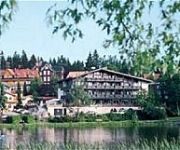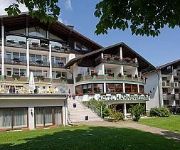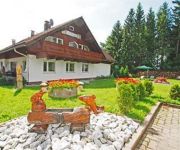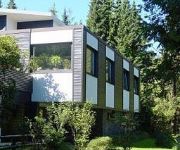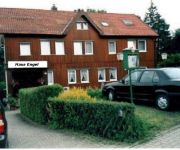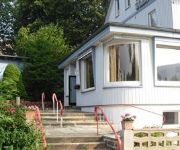Safety Score: 3,0 of 5.0 based on data from 9 authorites. Meaning we advice caution when travelling to Germany.
Travel warnings are updated daily. Source: Travel Warning Germany. Last Update: 2024-08-13 08:21:03
Delve into Zellerfeld
The district Zellerfeld of Clausthal-Zellerfeld in Lower Saxony is a subburb in Germany about 139 mi west of Berlin, the country's capital town.
If you need a hotel, we compiled a list of available hotels close to the map centre further down the page.
While being here, you might want to pay a visit to some of the following locations: Schulenberg im Oberharz, Osterode am Harz, Goslar, Hoerden and Elbingerode. To further explore this place, just scroll down and browse the available info.
Local weather forecast
Todays Local Weather Conditions & Forecast: 9°C / 48 °F
| Morning Temperature | 2°C / 36 °F |
| Evening Temperature | 5°C / 40 °F |
| Night Temperature | 4°C / 39 °F |
| Chance of rainfall | 0% |
| Air Humidity | 61% |
| Air Pressure | 1030 hPa |
| Wind Speed | Calm with 3 km/h (2 mph) from North |
| Cloud Conditions | Few clouds, covering 18% of sky |
| General Conditions | Few clouds |
Thursday, 7th of November 2024
10°C (50 °F)
4°C (39 °F)
Sky is clear, light breeze, clear sky.
Friday, 8th of November 2024
9°C (49 °F)
4°C (39 °F)
Sky is clear, light breeze, clear sky.
Saturday, 9th of November 2024
10°C (51 °F)
5°C (41 °F)
Sky is clear, light breeze, clear sky.
Hotels and Places to Stay
Hotels am Kranichsee
Akzent Goldene Krone
Hahnenkleer Hof
Njord
Zum Harzer
Gästehaus Tannenhof
Hotel Haus am Hochwald
Haus Engel
Waldrausch
Pension Waldfrieden
Videos from this area
These are videos related to the place based on their proximity to this place.
Clausthal-Zellerfeld im Oberharz * historische Berg & Universitätsstadt in Niedersachsen
Clausthal-Zellerfeld (Niedersachsen) ist eine alte, historische, Berg- und Universitätsstadt im Landkreis Goslar, in Niedersachsen. Sie ist eine der traditionsreichsten Universitätsstäd...
Schlittenhunderennen Clausthal Zellerfeld 2015 Harz
Schlittenhunderennen 2015 Clausthal Zellerfeld Harz http://harzwelten.de/veranstaltungen-im-harz/34-internationales-schlittenhunde-adventure.
Schneefräsen und Winterdienst Artikel von Börger Motorgeräte Clausthal-Zellerfeld
Schneefräsen Ausstellung von Börger Motorgeräte in Clausthal-Zellerfeld. Größte Schneefräsen Auswahl im Oberharz. Alle Marken von allen führenden Hersteller. Besuchen Sie unsere Webseiten...
Die Royal Party Society live beim AbiBall 2012 in Clausthal-Zellerfeld
AbiBall 2012 in der Stadthalle Clausthal-Zellerfeld. Die Royal Party Society durfte erneut für den Abitur-Jahrgang zum Ball aufspielen. Im Clip zu hören sind: Que Sera, Rolling In The Deep...
Mineralen op de TU Clausthal-Zellerfeld
Op de Technische Universiteit in Clausthal hebben we deze prachtige verzameling mogen bekijken. Erg de moeite waard. Ik zal weer eens beter naar mijn eigen stenen gaan kijken.
Oberharzer Bergbauern-Markt in Clausthal-Zellerfeld
Suchen Sie ein ausgefallenes, soziales Geschenk zu verschiedenen Anlässen? Denn auch in diesem Jahr dürfte Weihnachten wieder stattfinden!!! Dann sollten Sie hier vorbei schauen: http://goo.gl/T...
Videos provided by Youtube are under the copyright of their owners.
Attractions and noteworthy things
Distances are based on the centre of the city/town and sightseeing location. This list contains brief abstracts about monuments, holiday activities, national parcs, museums, organisations and more from the area as well as interesting facts about the region itself. Where available, you'll find the corresponding homepage. Otherwise the related wikipedia article.
Free solo climbing
Free solo climbing, also known as free soloing, is a form of free climbing where the climber (the free soloist) forgoes ropes, harnesses and other protective gear while ascending and relies only on his or her physical strength, climbing ability, and psychological fortitude to avoid a fatal fall. Free solo climbing should not be confused with general free climbing, in which gear is typically used for safety in case of a fall, but not to assist the climb.
Gustav Adolf Stave Church
The Protestant Gustav Adolf Stave Church (German Gustav-Adolf-Stabkirche) is a stave church situated in Hahnenklee, in the Harz region, Germany. The church is a free copy of Borgund stave church in Norway, with adaptions to fulfil its role as the Hahnenklee parish church. The construction began in 1907, and the church opened its doors for use on June 28, 1908.
Gose (river)
The Gose is a small river, a left tributary of the Oker, in Lower Saxony, Germany. It flows through the historic town centre of Goslar, where its waters were once used in the brewing of the traditional Gose beer – although within Goslar itself the river is today known as the Abzucht (meaning "conduit" or "drain"). The Gose flows into the Oker about 3 km east of Goslar town centre.
Clausthal University of Technology
The Clausthal University of Technology (German: Technische Universität Clausthal, also referred to as TU Clausthal or TUC) is an institute of technology in Clausthal-Zellerfeld, Lower Saxony, Germany. The small public university is regularly ranked among the Top German universities in engineering by CHE University Rankings. More than 30% of students and 20% of academic staff come from abroad, making it one of the most international universities in Germany.
Hahnenklee
Hahnenklee is a borough of the city of Goslar, in the German state of the Lower Saxony. It is located within the Harz mountain range between Goslar and Osterode.
Arboretum Bad Grund
The Arboretum Bad Grund (120 hectares), also known as Exotenwald and sometimes called the Arboretum des Forstamtes Grund or the Forstaboretum der Niedersächsischen Landesforstverwaltung, is an arboretum located along the B 242 federal highway near the Hübichenstein, northwest of Bad Grund, Lower Saxony, Germany. It is open daily without charge.
Hübichenstein
The Hübichenstein is an unusual rock formation in the Harz mountains, 50 meters in height, located on highway B242 about one kilometer northwest of Bad Grund, Lower Saxony, Germany. In 1897 it was crowned with a monument to Kaiser Wilhelm I, in the shape of an eagle with three-meter wingspan.
Schalke (Harz)
The Schalke is a mountain, 762 m above sea level, in the Upper Harz in the German state of Lower Saxony. It lies in Goslar district north of Clausthal-Zellerfeld and west of Schulenberg. From 1959 there was a French listening post on the summit, which was supplemented in 1968 by a 64 m high concrete tower. This tower stood empty from 1993 and was demolished on 11 October 2002; the entire facility being removed in September 2003.
Upper Harz Mining Museum
The Upper Harz Mining Museum is a museum of technological and cultural history in Clausthal-Zellerfeld in the Harz mountains of central Germany. It is one of the oldest technological museums in Germany and concentrates on the history and presentation of mining in the Upper Harz up to the 19th century.
Iberg (Harz)
The Iberg is a hill, 563 m above sea level, in the western Harz mountains in the German state of Lower Saxony. It lies north of Bad Grund, above the Harz High Road. The Iberg is an old coral reef that emerged in the Givetian/Frasnian stages, that was created as an atoll in the middle of the ocean, probably from the base of a volcano. The reef was mainly built by corals und stromatoporoidea.
Iberg Dripstone Cave
The Iberg Dripstone Cave is a public cave and geology museum in southern Lower Saxony near Bad Grund, Germany. It is located on the western edge of the Harz mountains in the 563-metre-high Iberg mountain at a height of 440 metres above sea level in the chalk of a upper Devonian atoll reef. The actual dripstone cave is 123 metres long. With its 78-metre-long Captain Spatzier Gallery, the Yellow Climb (Gelben Stieg) and two other caverns, the total length of the cave is 300 metres .
Hanskühnenburg
The Hanskühnenburg is a mountain hut in the Harz mountains. It is located at a height of 811 m above sea level in fields known as Auf dem Acker, or simply Acker, in the middle of the Harz National Park and has its own observation tower. Its name comes from the legendary Hanskühnenburg Crag (Hanskühnenburg Klippe) 300 metres to the northwest, which was visited on 14 August 1784 by Johann Wolfgang von Goethe.
Buntenbock
The small village of Buntenbock lies on the plateau of the Harz mountains in Germany and is part of the mining and university town of Clausthal-Zellerfeld. It is a state-recognised climatic health resort and has accommodation for 200 visitors as well as 700 inhabitants. The village lies on the Innerste at a height of 550–600 m above sea level.
Lautenthal
The formerly free mining town of Lautenthal is a state-recognised, climatic spa with around 2,000 inhabitants that has been part of the borough of Langelsheim since 1972.
Upper Harz
The Upper Harz refers to the western and higher part of the Harz mountain range in central Germany. Much of the Upper Harz is over 800 m above sea level, but at its eastern edge in the High Harz (Hochharz) it climbs to over 1,100 m on the Brocken massif.
Polsterberg Pumphouse
The Polsterberg Pumphouse is a pumping station above the Dyke Ditch in the Upper Harz in central Germany which is used today as a forest restaurant. As part of the Upper Harz Water Regale it was built in the 18th century and was used to lift the water needed in Clausthal for the mining industry from the Dyke Ditch (Dammgraben) to the level of the highest pond, the Hirschler Pond.
Polster Valley Wheel House
The Polster Valley Wheel House lies in the Polster valley about three kilometres from Altenau in the Upper Harz region of Germany and is surrounded by a campsite. The wheel house was built in 1729 and provided power for the pumping station of the Polsterberg Pumphouse (Polsterberger Hubhaus) with two water wheels until the early 20th century.
Sperberhai Dyke
The Sperberhai Dyke is in fact an aqueduct which forms part of the Upper Harz Water Regale network of reservoirs, ditches, dams and tunnels in the Harz mountains of central Germany. It carries the water of the Dyke Ditch over the depression of the Sperberhai to the Clausthal plateau. The Sperberhai Dyke was built in 1732 - 34 in order to satisfy the rising demand for water power for the water wheels of the Clausthal mines. The water crossed the embankment in a channel along its crest.
Kleine Schweimke
Kleine Schweimke is a river of Lower Saxony, Germany.
Zellbach
Zellbach is a river of Lower Saxony, Germany.
Huttaler Widerwaage
The Huttaler Widerwaage is a small reservoir that is part of the Upper Harz Water Regale, an old mining water management system in the Harz Mountains of Germany that is now a UNESCO World Heritage Site. The reservoir lies east of the mining town of Clausthal-Zellerfeld. It is designed to feed water from the Huttal river during times of low water to the reservoir pond of the Hirschler Teich and, during times of high water, to handle the overflow of water from it.
Bärenbrucher Teich
The Bärenbrucher Teich ("Bärenbruch Pond") is an historic reservoir in the Harz Mountains of central Germany. It lies east of Buntenbock near Clausthal-Zellerfeld. It belongs to the Upper Harz Ponds, that were originally laid out to supply water power for the Upper Harz mines. Its retaining capacity is 186,000 m³ and its barrage is around 7 metres high. The history of the Bärenbrucher Teich goes back to 1634.
Laute (river)
The Laute is a right tributary of the Innerste river in Lower Saxony. It rises in the vicinity of Hahnenklee in the Upper Harz and discharges about 6 km later into the Innerste in Lautenthal. The source is at an elevation of about 540 m at the bottom of a mountain called Kuttelbacher Berg. The Laute flows to the west parallel to road L 516 which is called Hahnenkleer Straße in Lautenthal. The name of the town means Laute Valley.
Jägersbleeker Teich
The Jägersbleeker Teich in the Harz Mountains of central Germany is a storage pond near the town of Clausthal-Zellerfeld in the county of Goslar in Lower Saxony. It is one of the Upper Harz Ponds that were created for the mining industry. The reservoir lies in the Upper Harz within the Harz Nature Park. It is located around 3.5 km east-southeast of the quarter of Clausthal. Its water surface lies at 586.5 m above sea level, it has a retention capacity of 380,000 m³ and its dam is 13.65 m high.
Harz Nature Park
The Harz (Lower Saxony) Nature Park (German: Naturpark Harz) or just Harz Nature Park lies in the counties of Goslar and Osterode am Harz in South Lower Saxony. The nature park in the Harz Mountains was founded in 1960 and is covers an area of around 790 km². It is run by the Harz Regional Association. The nature park includes the Upper Harz minus the Lower Saxon parts of the Harz National Park. Its eastern and southeaster boundary is part of the German Green Belt.


